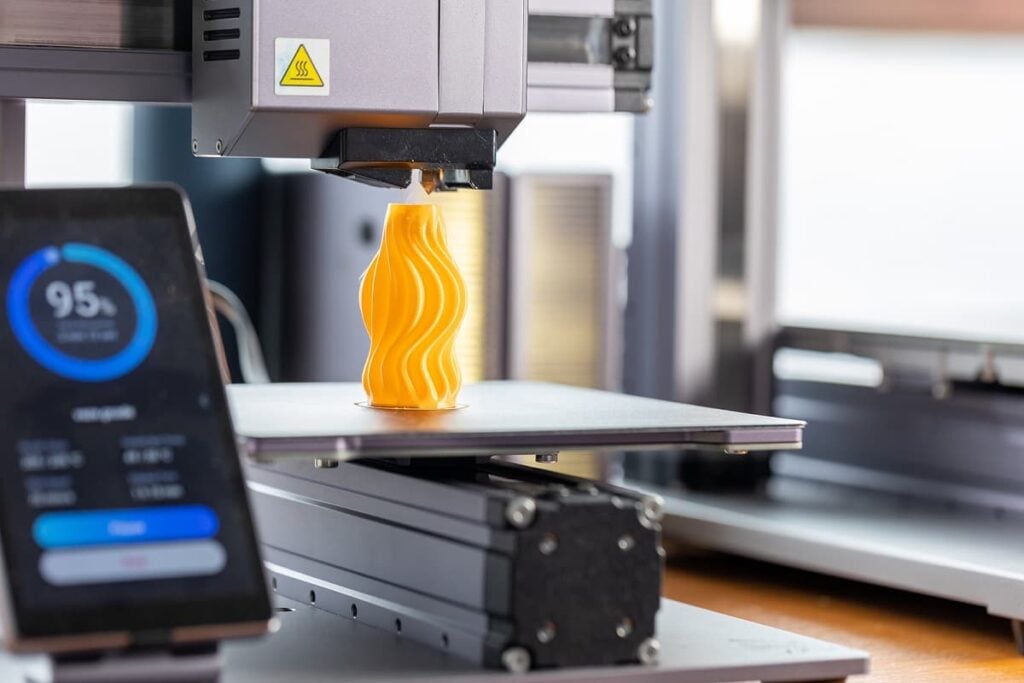3D Printing Solutions for Micro Manufacturing Components
Table of contents

You don’t need a pandemic to tell you that the world is ultimately ruled by the small things, whether it’s superbugs or parasites or bacteria-eating viruses. At the end of the day, humans are just vessels for hosts of different microorganisms. Maybe that’s helped shape our ability to innovate at the microscopic scale, leading to advances in synthetic biology, nanotechnology, computing, and more. Now it appears we can add 3D printing to the list of emerging technologies that are literally being downsized. We recently came across an Israeli company, Nanofabrica, which is developing an additive manufacturing printer to produce miniaturized parts with micron-level resolution.
A Startup Just Getting Started
Founded in 2016, the Tel Aviv-based startup has raised an undisclosed amount of money across four fundraising and grant rounds. That last round was back in May 2018 and included just one investor, an Israeli VC firm called i3 Equity Partners, which invests in early-stage startups focused on the Internet of Things (IoT). That tells us right away that Nanofabrica’s technology will have applications in components for things like sensors and other wee-sized widgets that enable machines to collect and communicate data across vast distances.
We’ll let i3 Equity managing partner Eran Wagner tell us more about why his firm is bullish on this early-stage startup. From his blog post last year on Medium:
In the age of IoT, there is a need for new manufacturing tools as things get smaller and smaller to the point where traditional manufacturing techniques are reaching their limits. … [Nanofabrica has] started building and executing a plan to collect, analyze and validate uses for the technology in order to find what we call ‘killer apps’ – markets worth over $100M annually where we could bring significant value (10x effect).
Wagner goes on to say that at the time Nanofabrica was already picking up paying customers interested in testing out the company’s 3D printer system, which has yet to go on sale. It also sounded like i3 Equity was trying to broker some sort of partnership between Nanofabrica and GE, which has been keen on 3D printing for the better part of a decade at least. No word on if anything ever materialized, though later that year they were selected to participate in Siemens Dynamo, a startup commercialization program.
A 3D Printer for Micro Manufacturing
The obvious $100 million question is what exactly is Nanofabrica developing? Well, this:

First off, the company is reportedly offering two 3D printers: The Workshop System and The Industrial System. As we understand it, the latter will be the flagship machine capable of micron-resolution printing, with the capability to print thousands of parts in a single build within a 5cm X 5cm X 10cm build envelope (or for those unfamiliar with the metric system, approximately 2in X 2in X 4in).
The printing engine itself is based on a standard 3D printing technique called digital light processing (DLP), where a light source cures a liquid polymer resin, combined with adaptive optics, a technology used to improve the performance of the optical system by correcting light distortion using a deformed mirror. Software algorithms reportedly help keep the balance between speed and accuracy, slowing down to ensure the devil is in the details when necessary, and then speeding up when higher resolution isn’t a requirement. Nanofabrica believes its printer is 5x to 100x faster than similar platforms (more on that below). The final result is something like this:

Nanofabrica is also producing a range of proprietary materials based on some of the standard plastics used in the industry such as polypropylene. It’s also reportedly developing 100% ceramic materials also capable of 1-micron resolution. In case you’re wondering, a single human hair is about the width of something like 50-75 microns.
Micro Manufacturing is a Thing
It’s all about producing teeny, tiny precise plastic parts in industries like optics and aerospace, as well as medical and semiconductor manufacturing, among others. Such micro manufacturing is becoming a thing. We know this because someone went to the trouble of trying to sell a market report on the micro injection molding industry (which will hit nearly $1.6 billion in 2025 for those of you who believe in astrology).
We just learned everything you would want to know about micro-molding from this website. But here’s a synopsis that will be quicker to read than waiting for the page to load: Micro injection molding involves a tooling department building a mold in which thermoplastic resin is injected into the cavity, creating an extremely small part.
The big question – and the one that is finally being answered by 3D metal printer and specialty 3D printing companies – is whether 3D printing technology can economically compete with traditional manufacturing. Or at least serve a complementary role. The answer is a definite “yes” from one corner of the industry: A fellow Israeli 3D printing company, Nano Dimension (NNDM), chimed in previously about Nanofabrica, saying that it could “usher in new micro manufacturing capabilities.”
More 3D Printers for Micro Manufacturing
Of course, it’s impossible these days in a world of nearly eight billion people to have a completely original idea. Not surprisingly, in the course of our research, we came across a couple of other companies developing their own 3D printers for micro manufacturing. Let’s take a quick look at the potential competition emerging in this space.
Founded in 2016, Boston Micro Fabrication (BMF) is a 3D printer startup building a micro manufacturing platform with ties in both the United States (as in MIT) and China, and recently moved its commercial HQ to Beantown. Last month, the company went global with its line of microArch printers capable of printing down to a resolution of 2 microns. Obviously that’s “twice as wide” as Nanofabrica, but can you really split hairs when we’re talking about a resolution that’s the fraction of a hair’s width? BMF calls its proprietary 3D printing technology Projection Micro-Stereolithography (PμSL), which “leverages light, customizable optics, a high-quality movement platform and controlled processing technology” to build small components for prototyping and short-run productions in markets like electronics and medical equipment. The microArch has already been on sale for about 18 months in Asia, where BMF has installed more than 40 systems.

Also founded in 2016 as a spinout from Grenoble Alpes University in France following 15 years of research, Microlight3D has developed a 3D printing platform that uses two-photon polymerization technology. Basically, it builds microstructures by employing two super-short pulses of light (photons) simultaneously onto photo-activated material in a very small building volume called a “voxel.” A chemical reaction turns the liquid monomer into a solid polymer. In other words, you’ve just made a very small plastic object – reportedly down to less than a micron in some applications. The company recently scored a grant worth more than $800,000 to help develop a bio 3D printer for dermal regeneration.
Conclusion
It appears that 3D printing solutions for microfabrication are just now beginning to emerge with these early-stage startups. It’s interesting to observe the different kinds of technologies being deployed to solve the same problem. Perhaps there’s room for them all and more. The CEO at Nano Dimension certainly believes so, though his company’s stock has cratered since its 2016 debut, down to a market cap barely north of $8 million and falling, so maybe he’s hoping someone is hiring soon. While that’s largely been the story for other 3D printing stocks as well, today’s startups are still taking funding at a good clip, as the industry begins to find viable commercial markets. 3D printing solutions for microfabrication might just turn out to be a big deal.
Sign up to our newsletter to get more of our great research delivered straight to your inbox!
Nanalyze Weekly includes useful insights written by our team of underpaid MBAs, research on new disruptive technology stocks flying under the radar, and summaries of our recent research. Always 100% free.














